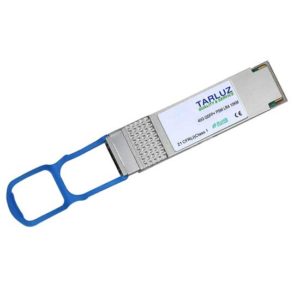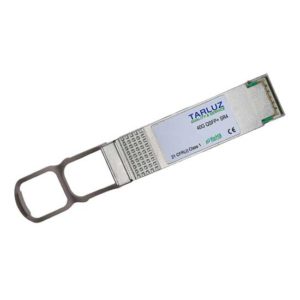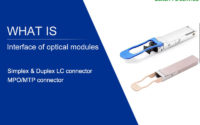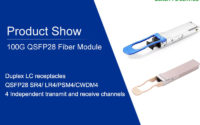Products Show: 40G Fiber Optical Transceivers
With the approaching of the cloud computing and big data era, the network is forced to develop at a high rate and high density, and the utilization rate of the virtualization server is increased. In order to provide sufficient I/O (input/output) bandwidth, many new access switches have evolved into 2- or 4-port 40G Ethernet that can be connected to core switches. The rapid development of interconnected data transmission is inseparable from the 40G QSFP+ optical module, because it can provide enough bandwidth to ensure unimpeded data conversion, so as to meet the network and enterprise campus network needs. TARLUZ 40 G fiber optical transceivers will be discussed in this post.
The advantages of 40G fiber optical transceivers
The 40G QSFP+ optical module can transmit data at 10Gbps per channel under the same port volume of the matchXFP optical module, and supports four channels of data transmission in the same match. Therefore, the density of the 40G QSFP optical module can be 4 times that of the XFP optical module. , is 3 times that of SFP+ optical modules.
Three different types of QSFP+ transceivers
40G LR4 QSFP+ Fiber Optical Transceivers
The 40G LR4 QSFP+ optical module has the advantages of high density, low cost, high speed, large capacity, and low power consumption. Usually used between data centers and Internet exchange points, generally connected to LC connectors.
It has four independent optical signal receiving and transmitting channels, which need to use WDM technology to multiplex and demultiplex optical signals, so as to realize the transmission of optical signals on long-distance single-mode fibers.

40G SR4 QSFP+ Fiber Optical Transceivers
The 40G SR4 QSFP+ optical module operates at 850nm and conforms to the 802.3ba D3.2 (40GBASE-SR4) standard. It is often used with MPO/MTP connectors in 40G data transmission. It has 4 independent full-duplex channels and is also passed through four. The channels are transmitted at the same rate as LR4. The difference is that 40G SR4 QSFP+ optical modules are often used with multimode fibers. In the data center, they can be used with multimode OM3/OM4 fibers to achieve 100m (OM3) and 150m (OM4) transmissions. When the signal is transmitted at the transmitting end, the laser array first converts the electrical signal into an optical signal, and the parallel optical signal is converted into a parallel electrical signal by the photodetector array when the parallel transmitting and receiving end of the strip-shaped multimode optical fiber receives the signal. Enables interconnection between two Ethernet switches.

40G LR4 PSM QSFP+ Fiber Optical Transceivers
40G QSFP+ PSM is a high performance, low power, long time optical module supporting 40G Ethernet, Fibre Channel and PCIe interconnect solutions
As a highly integrated 4-channel optical module, it has the advantage of higher density and cost savings for the entire system. The optical port adopts PSM (Parallel Single Mode) parallel single-mode technology of 8 single-mode fibers, and realizes effective transmission of 10km by using 4 channels of parallel designed MPO/MTP interface. It is a combination of four full-duplex channels, each capable of transmitting data up to 10Gb/s, providing a 40Gb/s aggregation rate. The working principle of the 40G LR4 PSM optical module is the same as that of the 40G SR4 QSFP+ optical module. The electrical signals are converted into optical signals by the laser array, and the optical signals are converted into electrical signals by the photodetector array. The difference is that 40G LR4 PSM optical modules are often used to connect to single-mode ribbon fibers, that is, parallel optical signals are transmitted in parallel through eight single-mode fibers.

Conclusion
The 40G SR4 QSFP+ optical module is suitable for short-distance transmission and is commonly used in data centers to connect Ethernet switches with OM3/OM4 cables. The 40G LR4 QSFP+ optical module and 40G LR4 PSM optical module are suitable for long-distance transmission. Compared to the two transceivers, the 40G LR4 QSFP+ optical module is more cost effective. Because in long-distance transmission, the 40G LR4 QSFP+ optical module requires only two single-mode fibers, while the 40G LR4 PSM optical module requires eight single-mode fibers.


